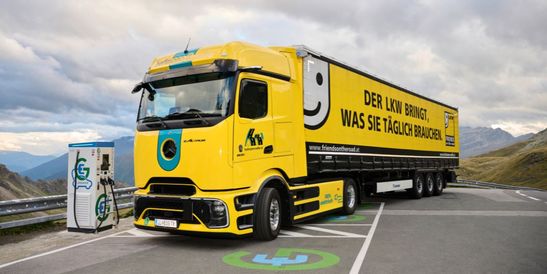Modern multi-family residential complex with balconies and well-maintained outdoor areas, symbolizing the easy charging of electric cars at home thanks to the “Right-to-Plug” regulation.
- Knowledge
- Charging
- Private
- 3.7.2024
- Reading Time: {{readingTime}} min

Contents
What is the "Right-to-Plug"?
With the amendment of the Condominium Act (WEG) in Austria, the path to having your own e-charging station in multi-family buildings has been simplified, known as the "Right-to-Plug." Previously, it was necessary to obtain the consent of all condominium owners to install a charging station. Under the new regulation, proper written communication is sufficient, and if no objection is raised within 2 months, consent is considered granted.
Technical specifications and requirements of the "Right-to-Plug"
It should be noted that this regulation only applies to charging stations with a charging power of 3.7 kW single-phase or 5.5 kW three-phase, which is referred to as "slow charging." Electricians can configure the corresponding charging stations accordingly to meet the requirements of the "Right-to-Plug" and facilitate installation in multi-family buildings. KEBA charging stations provide the technical prerequisites for this — here you can find information on how our wallboxes can be set to a maximum output of 5.5 kW.
Advantages and benefits of the "Right-to-Plug" for electric vehicle owners
Owners of electric vehicles can benefit from this new regulation by being able to install their own charging stations in multi-family buildings more easily. This gives them the opportunity to charge their vehicles conveniently and simply without relying on public charging stations. The "Right-to-Plug" is an important step to improve the infrastructure for electric vehicles in residential buildings and to further promote the acceptance of e-mobility.
The future of e-mobility with the "Right-to-Plug"
The future of e-mobility has begun, and the simplification of access to charging stations in multi-family buildings through the "Right-to-Plug" is an important step in this direction. Now, condominium owners are also enabled to take advantage of electric mobility while overcoming the challenges of charging infrastructure in multi-family buildings.
How can a KEBA KeContact P30 wallbox be set to a maximum of 5.5 kW?
WARNING: Have these steps carried out only by a certified electrician.
- Make sure that at least software version 1.18.0 (x-series) or firmware version 3.10.56 (a-/b-/c-/e-series) or newer is installed.
- Set the DIP switch toggles to ON. The following DIP switch settings should be set for 8A:

- Restart the wallbox so that the DIP switch changes are applied.
- Done! (By the combination of DIP switch 1.6 = OFF + DIP switch 1.7 = ON + DIP switch 1.8 + software ≥ 1.18.0, the charging current is limited to a maximum of 8A. With three-phase charging, this corresponds to 5.5 kW.)
A description of this procedure for the P30 can also be found in the installation manual (chapter 8.1) in our download area.
WARNING: These settings also apply to single-phase charging. Here, charging is also limited to a maximum of 8A, which results in a max charging power of only 1.84 kW.
To ensure that none of the settings are tampered with and the configurations remain "Right-to-Plug" compliant, we recommend sealing the cover of the DIP switches.
How can a KEBA KeContact P40 wallbox be set to a maximum of 5.5 kW?
The P40 can be set to 8A via the electrical basic configuration directly at the charging station or also through the KEBA eMobility App or the KEBA eMobility Portal.
A description of this procedure for the P40 can also be found in the installation manual (chapter 11.2) in our download area.







